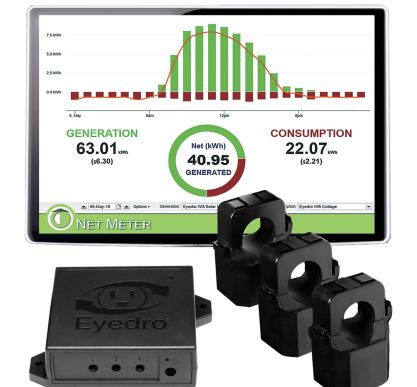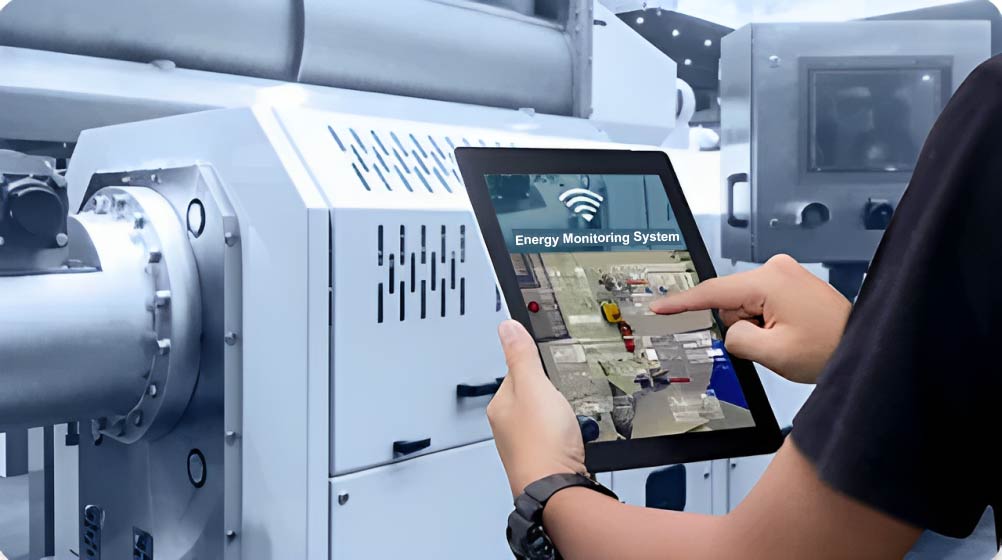USE CASES

Unlocking Efficiency: The Role of Sensors and Monitoring in Industrial Energy Management
In today’s rapidly evolving industrial landscape, energy efficiency has become a paramount concern for
businesses seeking to reduce operational costs, minimize environmental impact, and ensure long-term
sustainability. Harnessing the power of sensors and monitoring systems is proving to be a game-changer in
achieving these goals, particularly in the realm of energy management. This article explores the pivotal role
sensors and monitoring play in industrial energy monitoring and management.
The Imperative of Energy Efficiency
In today’s rapidly evolving industrial landscape, energy efficiency has become a paramount concern for
businesses seeking to reduce operational costs, minimize environmental impact, and ensure long-term
sustainability. Harnessing the power of sensors and monitoring systems is proving to be a game-changer in
achieving these goals, particularly in the realm of energy management. This article explores the pivotal role
sensors and monitoring play in industrial energy monitoring and management.
Energy sensors measure electricity usage at various points in the facility,
allowing businesses to identify energy hogs and make informed decisions about energy usage.
Monitoring temperature and humidity levels is crucial for efficient climate
control, ensuring that HVAC systems operate optimally and energy is not wasted.
Light sensors adjust artificial lighting levels based on natural light conditions,
reducing energy consumption while maintaining adequate illumination.
Sensors attached to machinery can monitor performance and detect
anomalies, helping to identify maintenance needs and potential energy-saving opportunities.
Occupancy sensors can regulate lighting, heating, and cooling systems in response to
real-time occupancy, preventing energy waste in unoccupied areas.

The Path to Sustainable Industrial Energy Management
Embracing sensor technology and monitoring systems not only enhances energy efficiency but also contributes
to the broader goal of sustainability. By reducing energy consumption and minimizing waste, industrial facilities
can significantly lower their carbon footprint and meet regulatory requirements.
In conclusion, the integration of sensors and monitoring systems in industrial energy management is a
transformative step towards a more efficient, cost-effective, and sustainable future. Leveraging real-time data
and intelligent analysis, businesses can unlock substantial energy savings while simultaneously reducing their
environmental impact. As energy efficiency continues to be a top priority for industries worldwide, embracing
these technologies is not just an option but a strategic imperative for long-term success.
Data Monitoring and Analysis: The Brain Behind Energy Efficiency
Collecting data is just the beginning. The true power of energy monitoring lies in the analysis of this data. Monitoring systems process vast amounts of information, identify patterns, and provide actionable insights.
Some key functions of data analysis in industrial energy management include:
By analyzing historical data, businesses can identify when energy
usage is highest and implement strategies to reduce consumption during peak periods.
Monitoring systems can predict equipment failures based on data trends,
enabling proactive maintenance to prevent costly downtime.
Comparing energy consumption data with industry benchmarks helps
businesses gauge their performance and set realistic energy-saving targets.
In multi-tenant industrial facilities, monitoring systems can allocate energy costs
accurately to each tenant based on their consumption, promoting fairness and accountability
: Data analysis reveals opportunities for optimizing energy use, such as
adjusting operating schedules, upgrading equipment, or implementing energy-efficient technologies.